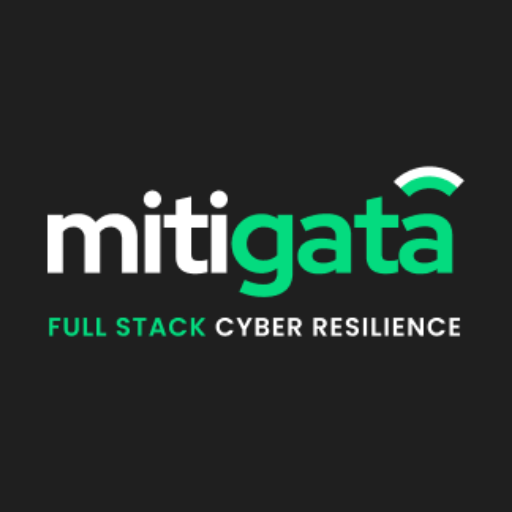Every single day, around 3.4 billion phishing emails flood inboxes worldwide. Google alone blocks over 100 million of them, and that’s just the visible tip of the iceberg.
Behind the scenes, cybercriminals are trading stolen logins, selling leaked credentials, and sharing entire email databases across the dark web – the hidden layer of the internet that search engines can’t reach.
But how do you really know if your email is floating around there? And more importantly, what should you do if your email is still out there?
Stay tuned, and we’ll give you all the answers.
Mitigata – Your Trusted Cybersecurity Partner
Trusted by over 800 global businesses, Mitigata isn’t just another monitoring service – it’s your cyber early-warning system.
While others react after the breach, Mitigata stays one step ahead, tracking digital footprints across hidden networks where stolen data is sold, traded, and exploited.
What Makes Mitigata Different:
- Deep Visibility: Our Mitigata Console monitors the dark web’s most active platforms, from hacker forums to encrypted Telegram groups, identifying early signs of penetration long before they make news.
- Smart Intelligence: We don’t drown you in raw data. Instead, we analyse, verify, and prioritise threats based on severity and business impact.
- Human Expertise + Machine Precision: Our analysts pair advanced AI-driven detection with real-world threat research to deliver context-rich insights.
- Actionable Outcomes: When your company or domain surfaces in dark web chatter, we tell you who’s talking, why it matters, and what to do next.
Cybercriminals can’t hide when Mitigata monitors dark web threats
Mitigata delivers real-time detection, expert-led response, and market-best pricing, without compromising your budget.

What It Means When Your Email Is Found on the Dark Web
When hackers get hold of your email and password in a data breach, they don’t stop at one account. They quickly attempt credential stuffing. Since around 65% of users reuse passwords, there’s a high chance multiple accounts can be compromised.
Here’s what it really means when your email shows up on the dark web:
- Your Credentials Are Actively Circulating
If your email address appears in breach databases, it signifies that your login information was exfiltrated from a compromised system and is now available to hackers. Attackers use automated scripts and botnets to carry out large-scale credential stuffing or brute-force attacks against popular services.
Explore the most common types of phishing attacks and how to defend against them in our detailed phishing email guide.
- You are at risk of an account takeover (ATO)
Once your credentials have been hijacked, hackers may attempt account takeovers to get access to your email, bank accounts, or workplace systems. From there, they may branch out, exploit new data, or do Business Email Compromise (BEC) fraud.
- You Become a Target for Phishing
Leaked emails often end up in targeted phishing and social engineering campaigns. Attackers create convincing spear-phishing messages, mentioning details from past breaches to deceive victims into revealing more information or downloading malware.
- Your Data Can Be Used for Identity Theft
Dark web records are often correlated with other exposed data, such as phone numbers or government IDs. This information is then used for identity fraud, synthetic identities, or unauthorised financial transactions.
Every leaked password or record can shut down your business
Trusted by 800+ businesses, our platform ensures continuous protection with advanced features for you and your data.

Step-by-Step: What to Do If Your Email Is Found on the Dark Web
Here’s a clear action plan to minimise damage and regain control:
| Step | Action | Why It Matters |
| 1. Change Your Passwords Immediately | Update passwords for all accounts linked to the exposed email. Use strong, unique passwords. | Prevents hackers from accessing multiple platforms. |
| 2. Enable Multi-Factor Authentication (MFA) | Turn on MFA for all key accounts, especially email, banking, and social media. | Stops unauthorised access even if your password is leaked. |
| 3. Review Linked Accounts | Check which platforms use this email for logins. | Prevents chained account breaches. |
| 4. Review Account Recovery Options | Make sure your recovery email and phone number are up to date. | Helps you regain access if an account is hacked. |
| 5. Check for Suspicious Activity | Monitor your inbox for password reset emails or unusual login alerts. | Detects early signs of account compromise. |
| 6. Run a Dark Web Scan | Use tools like Mitigata Console to find other exposed data. | Reveals the extent of your data exposure. |
| 7. Run a Full Security Scan | Use reliable antivirus and anti-malware tools to detect infected files or keyloggers. | Removes any malicious software that may have captured your credentials. |
| 8. Consider Professional Monitoring | Partner with Mitigata for continuous dark web intelligence and credential leak tracking. | Ensures you’re notified instantly when your data resurfaces online. |
Conclusion
With over 347 billion spam emails sent every single day, the odds of exposure are higher than ever. One wrong click or reused password can open the door to a full-scale compromise.
Don’t leave your digital security to chance. Mitigata’s Dark Web Monitoring delivers real-time threat intelligence, verified breach analysis, and proactive alerts – so you can act before attackers do.
Contact us and take back control of your cybersecurity!

